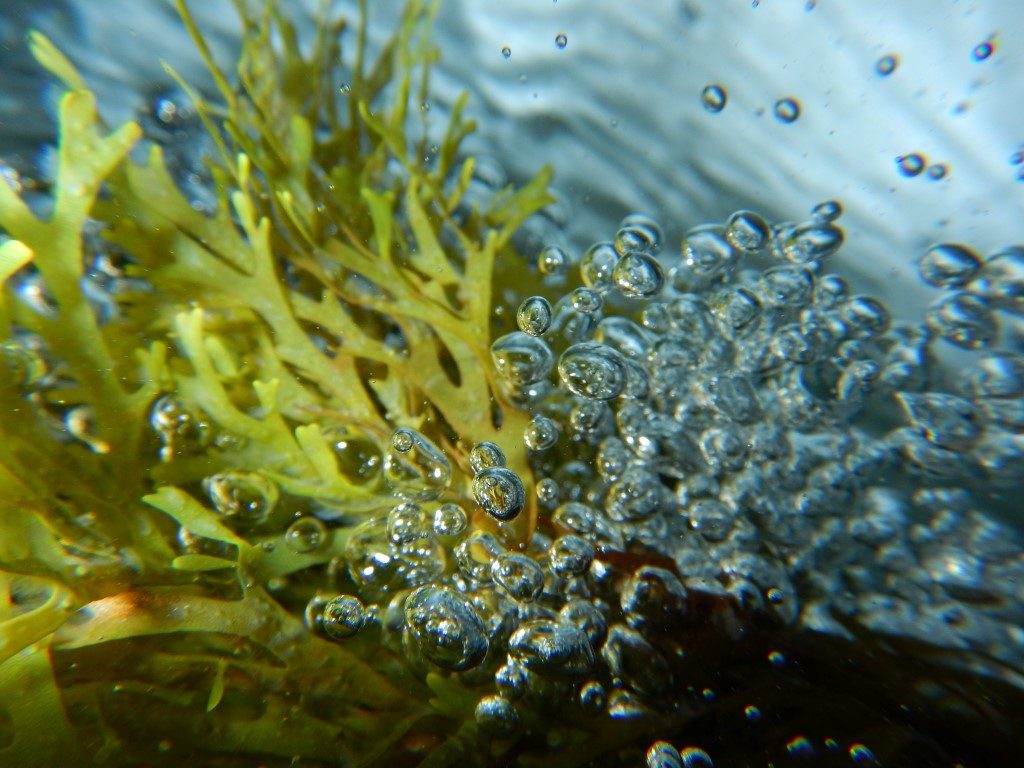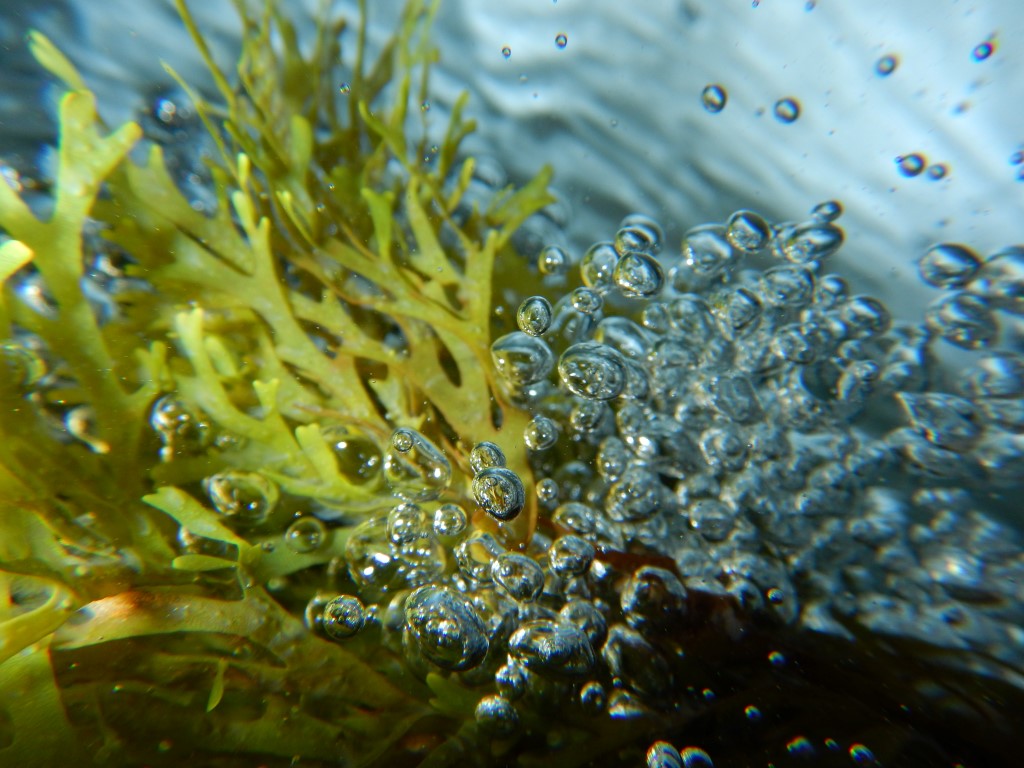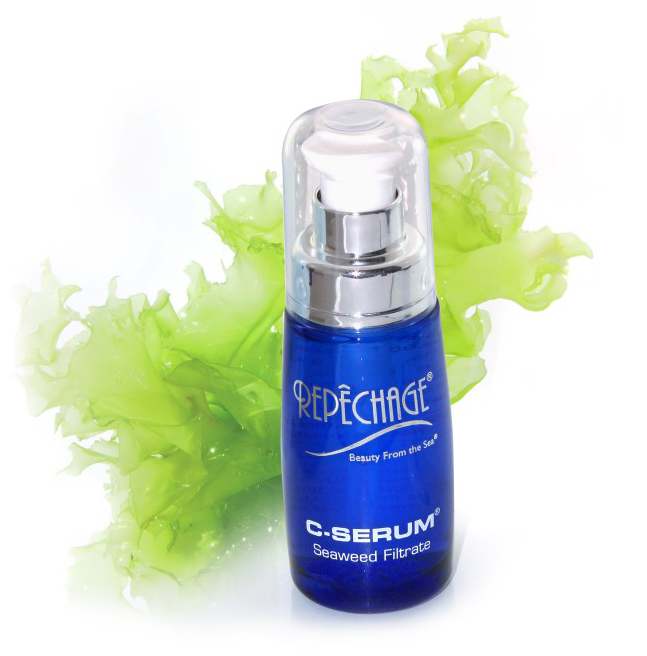
When I created my first Repêchage products based on our unique seaweed filtrate in 1980, I was told it would take 20 years for the rest of the skin care industry to catch on. Actually, it’s taken over 30 years! Today seaweed is one of the top subjects in international communities for development and continues to play a vital role in skin care. Read below as I examine some of the most recent research as well as review some of the more important aspects of the seaweeds used in the Repêchage product line.
Seaweed – Growth as a Resource
Leading scientists are looking towards seaweed and aquaculture to find numerous applications in the modern world because of their composition and ability to grow just about anywhere in the ocean.
“Seaweeds are abundant and ancient autotrophic organisms that can be found in virtually all near-shore aquatic ecosystems. They form an important living resource of the near shore environment. For millennia, people have collected seaweeds for food, fodder for animals and well as fertilizers and soil enhancers. More recently, seaweeds have become important sources of various bioreactive molecules, and are important in medicine and biotechnology. Containing phycocolloids, or polysaccharides, they are also used in toothpaste, soaps, shampoos, cosmetics, skin care, milk, ice cream and many other items.”¹
Seaweed needs light for photosynthesis, which converts light energy into chemical energy producing sugars and oxygen. The colors of seaweeds are determined by the photosynthetic pigments including chlorophylls, phycobiliproteins, xanthophylls and carotenoids. Seaweeds also have compounds such as mycosporine-like amino acids that protect them from ultraviolet light too.
While Asia is the largest market of seaweed globally and accounted for more than 55% of market share in 2015, North America is the fastest growing region for seaweed applications and market growth. Recent reports have found that the seaweed industry is undergoing a rapid global expansion and currently accounts for approx. 49% of the total mariculture production, with the industry valued in total $6.4 billion in 2014.² Of key importance is biosecurity, disease prevention and detection, and creating sustainable, healthy environment for seaweed that will create a sustainable balance between economic growth and ocean health.
According to the Food and Agriculture Organization, seaweed use has increased 176% since 1995, and predictions have an even greater growth in the future. The benefits of seaweed for health and well-being has been studied for many years, but there is a renewed interest in seaweed as a sustainable and plentiful source of many important ingredients to help treat many pathologies, including the most complex of organs, the brain.
According to an article in the Journal of Applied Phycology, “Seaweeds produced under controlled conditions offer boundless opportunities to satisfy the known requirements for brain health and could readily play important roles in improving overall human health and well-being.”³
Seaweed in Skin Care
For centuries, people have turned to the sea for its renewing properties. Thalassotherapy, stemming from the Greek word for sea, “thalassos”, is a term coined to describe the usage of seawater for therapeutic purposes and preventative measures based on the belief that immersion in seawater helps promote wellbeing and cleanses the system. Bathing in seawater is one of the deepest rooted bathing traditions. Today, the tradition of thalassotherapy continues as spas and skin care centers around the world.
In skin care, specific seaweeds can be used to create a number of beneficial cosmetic effects including decreasing the appearance of oil, diminishing the appearance of fine lines and wrinkles, exfoliating the skin for a more luminous looking complexion and moisturizing the skin to make it feel and look soft and smooth.
Here is a list of some of these key species used in Repêchage products today:
Laminaria digitata
A brown seaweed found in the very low intertidal and shallow subtidal marine environments in the Atlantic and Pacific Oceans. This seaweed is often called the horsetail kelp and is a natural source of 12 vitamins including B12, C, E, K and beta carotene, 18 amino acids, and as many as 42 trace elements. Laminaria digitata is renowned for its ability to help moisturize the skin.
Codium fragile f. atlanticum
A green seaweed anchored to rocks from 1 cm to a few many meters in size found in the intertidal to shallow subtidal marine environments with branched cylindrical fronds. Known to help instantly boost moisture.
Ascophyllum nodosum
A brown seaweed, which thrives in the upper intertidal and shallow subtidal marine environments in the North Atlantic Ocean. It is often called knotted wrack or rockweed. It is rich in vitamins, minerals, and amino acid, phytohormones, fucoidan and alginic acid. Helps skin look smooth and soft.
Ulva compressa
Green sheets or tubular in construction found in many near shore environments around the globe. This helps skin look and feel firmer.
Ahnfeltia plicata (formerly referred to as “Ahnfeltia concinna”)
A wiry subtidal red marine alga from the coast of the Hawaiian Islands and now found along the coasts of the north Atlantic Ocean often associated with the holdfasts of kelp. Helps to restore moisture and soothe the skin.
Ulva lactuca
A green seaweed found in the intertidal and shallow subtidal marine environments all over the world. This helps reduce the visible signs of aging, diminishing the appearance of fine lines.
Saccharina latissima
This brown seaweed is known as the sugar kelp. It is found in the shallow subtidal cold water environments in the Atlantic and Pacific Oceans. It too is rich in many vitamins, minerals, trace elements, amino acids, and alginic acid. This helps reduce the appearance of oil on the skin.
Fucus vesiculosus
This brown macroalga is often called rockweed. It is found in the intertidal to shallow subtidal marine environments of the North Atlantic Ocean. It is rich in vitamins, contains fucoidan, and alginic acidic. This seaweed helps with deep cleansing and reducing the appearance of oil.
Porphyridium spp.
A group of single celled red microalgae that is high in essential fatty acids as well as Vitamins B and C. Helps with oily skin.
Lithothamnion calcareum
A red alga whose main feature is the formation of calcium carbonate in its cell walls. Helps skin look and feel firmer, more toned.
Pelvetia canaliculata
A brown alga found attached to rocks of the upper intertidal rocky shores in the eastern Atlantic Ocean. Helps reduce the appearance of dark spots.
With the increased interest and research into seaweed as a resource and skincare ingredient, seaweed promises to become an even more important ingredient for wide spread use, from medicine to even biofuels. As the “Queen of Seaweed” I’m personally beyond excited to see what lies ahead for seaweed, and what seaweed will offer us all in the future!
REFERENCES:
¹ Pereira, R. and C. Yarish. 2008. Mass production of Marine Macroalgae. In Sven Erik Jørgensen and Brian D. Fath (Editor-in-Chief), Ecological Engineering. Vol. [3] of Encyclopedia of Ecology, 5 vols. pp. 2236-2247. Oxford: Elsevier.
² Cottier-Cook, E.J., Nagabhatla, N., Badis, Y., Campbell, M., Chopin, T, Dai, W, Fang, J., He, P, Hewitt, C, Kim, G. H., Huo, Y, Jiang, Z, Kema, G, Li, X, Liu, F, Liu, H, Liu, Y, Lu, Q, Luo, Q, Mao, Y, Msuya, F. E, Rebours, C, Shen, H., Stentiford, G. D., Yarish, C, Wu, H, Yang, X, Zhang, J, Zhou, Y, Gachon, C. M. M. (2016). Safeguarding the future of the global seaweed aquaculture industry. United Nations University (INWEH) and Scottish Association for Marine Science Policy Brief. ISBN 978-92-808-6080-1. 12pp
³ Cornish, M.L., A.T. Critchley & O.G. Mouritsen .January, 2017. Consumption of Seaweeds and the Human Brain, Journal of Applied Phycology. DOI 10.1007/s10811-016-1049-3
*This blog is for informational purposes only and is not intended as medical advice, treatment or diagnosis. Always seek the advice of your doctor or health provider with any questions or concerns you may have about a medical condition.

